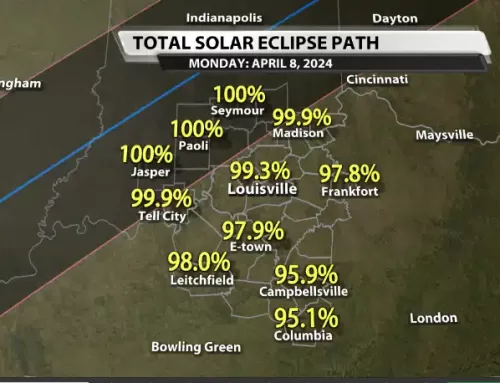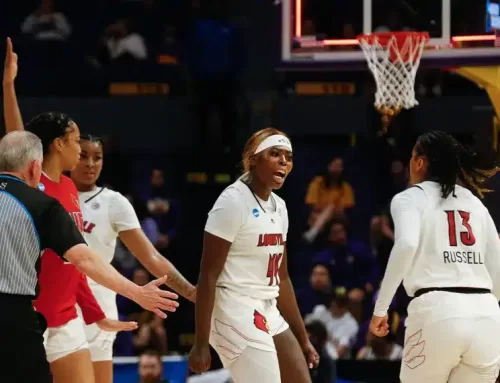By Brooke Moody–
Americans are nine weeks away from the election of our new president. Unless you’ve been living under a rock, you’ve seen headlines ranging from email scandals to con-business courses and every dramatic detail in between this election season.
Though important issues that deserve due regard, the topics that plague newsfeeds don’t shed much light on the matters of the election that will affect average citizens in their day-to-day life. In order to make an educated vote in November, it is imperative voters understand the real positions at hand and how each candidate’s stance would affect policies, laws and actions should they be elected.
Leading up to the election, The Cardinal will look at each candidate’s views on topics such as taxation, equality actions, foreign affairs and health care.
The issue: Higher Education
An estimated 20.5 million students are enrolled in college courses this fall, according to the U.S. Department of Education. Concerns regarding tuition costs, campus diversity and post-graduation debt continue to plague institutions across the country.
The University of Louisville is not exempt from these problems and more as the university faces FBI investigation, accreditation concerns, administration restructuring and recently increased tuition rates.
The candidates and their stances:
Hillary Clinton
Clinton has proposed a higher education plan, the New College Compact, with the mantra “Costs won’t be a barrier. Debt won’t hold you back.” Details of her proposal include:
- Students from families making $85,000 a year or less will pay no tuition costs at in-state public colleges and universities, with the income limit reaching $125,000 per year by 2021.
- Tuition at community colleges will be free.
- A $25 billion fund will be created to support historically black universities and colleges and other minority serving institutions.
- Debt repayment plans will be restructured to reduce the burden.
- Government loan interest rates will be cut and predatory schools, lenders and bill collectors will be cracked down on.
- More details of the plan can be found at Hillaryclinton.com
The Clinton campaign has suggested that the costs of this program will be paid for by limiting tax expenditures for high-income taxpayers as well as investment from states.
Low-income students will see the most benefit from the New College Compact, and middle-income families will feel the benefits by 2021.
“One of the persistent negative aspects of U.S. college attendance is its link to socio-economic status. So any efforts to improve higher education attainment across the social spectrum needs to be tied to economic status,” said Michael Cuyjet, professor emeritus of the College of Education and Human Development.
“Clinton’s plan, with its focus on low-income students and special attention to community colleges, is likely to have a significant impact on those most in need of assistance to attend and complete college.”
The New College Compact will also benefit college graduates who have racked up debt. Under the plan, borrowers won’t pay back more than 10 percent of their income, and all remaining college debt will be forgiven after 20 years.
Criticism of the proposal includes concerns regarding the cost of such a plan. Taxation aside, the plan relies on state cooperation but won’t force states to comply. In addition, according to a study published by the National Bureau of Economic Research, rise in tuition can be directly linked to increase in federal aid. The findings of the research suggest that if Clinton’s plan was put into place, colleges and universities would simply raise tuition prices to make up for the deficit created.
Donald Trump
Trump himself has yet to take an official position on higher education, but co-chairman to his campaign, Sam Clovis, commented on the topic in an interview with Inside Higher Ed. Clovis detailed the stance Trump was preparing. Details of the supposed proposal include:
- Removing the government from student loan lending, and instead reinstating private banks as lenders.
- All colleges and universities, including historically black colleges or community colleges, will share the risk of student loans.
- Colleges basing admittance on a student’s perceived ability to graduate within a reasonable timeframe.
- Student loan eligibility based on job security for the student’s intended degree of study.
- Community colleges would have tuition costs, and be encouraged to uphold the same admittance policy of universities by serving those who can succeed and will have job opportunities from their degree.
The essence of Clovis’ statement indicates a plan that would reconstruct the higher education system as we know it. With the government out of the lending picture local banks would benefit, and ideally local markets. Colleges and universities would have greater incentive to ensure graduation success, which would help reduce the amount of time students spend in school, therefore reducing post-graduation debt.
Criticism of the position includes concerns in regards to the plan’s failure to address the cost of higher education. According to the U.S. Department of Education, average annual cost are $15,000 a year for community colleges and $23,000 for four-year institutions. Clovis did not mention plans to reduce these costs nor did he detail ways Trump plans aid students besides loans.
“People for whom college attendance is an economic struggle are proportionally more likely to attend part-time,” said Cuyjet, “thus, they often take longer than four years to complete a baccalaureate degree.”
“If Trump’s plan uses “perceived ability to graduate in a four-year period” as a criterion, it would be of lesser assistance to that population of lower income, part-time students who are the most vulnerable and the most in need of assistance from the government to attain a college degree,” Cuyjet said.
The Federal Reserve estimates Americans collectively owe as much as $1.32 trillion on student loans. The Trump campaign has yet to make a statement regarding loan relief or student debt assistance.
The policies described by Clovis are not Trump’s official position. Voters should stay on alert for official campaign statements. Clovis’ comments are aligned with Republican party’s platform, and are indicative of Trump’s forthcoming stance.
Photo by Sarah Rohleder / The Louisville Cardinal





